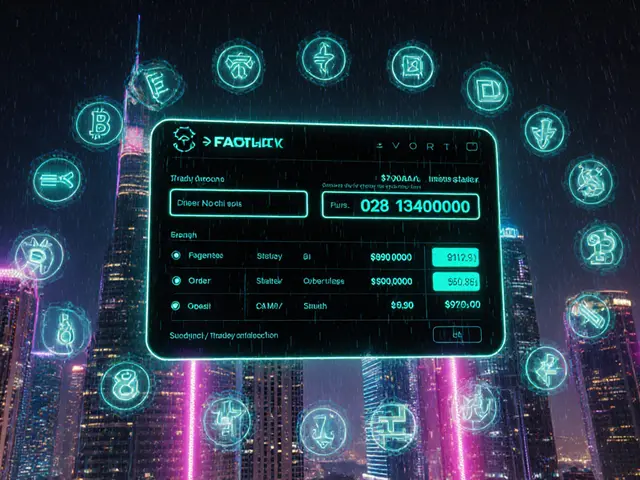
DAG token
When working with DAG token, a cryptocurrency built on directed acyclic graph (DAG) architecture that aims for high scalability and near‑zero fees, also known as DAG, you’re entering a space where speed meets low cost. The underlying Directed Acyclic Graph, a data structure that processes transactions in parallel without traditional mining lets the token handle thousands of moves per second. In the broader DeFi, decentralized finance platforms that replace banks with smart contracts ecosystem, the DAG token is often pitched as the fuel for cheap swaps and instant settlements. Early adopters also watch for Airdrop, a distribution method that rewards holders or participants with free tokens campaigns, which can boost community growth and liquidity.
DAG token brings a distinct set of tokenomics to the table. Its supply model typically caps the total at a fixed amount while burning a fraction of each transaction fee, creating a deflationary pressure over time. The fee‑on‑transfer mechanic not only funds network security but also funds development wallets, so the token’s value proposition includes both user incentives and sustainable project funding. Because the DAG structure avoids proof‑of‑work, the energy footprint stays low, which appeals to environmentally conscious investors. These attributes line up with the semantic triple: "DAG token encompasses deflationary tokenomics," and "DAG token requires on‑chain fee burning to sustain its ecosystem."
Scalability is the main selling point for any DAG‑based asset. By eliminating block intervals, the network can confirm transactions in milliseconds, a feature that directly benefits Decentralized Exchanges, platforms that let users trade crypto without a central order book. On a DEX, fast finality reduces slippage and improves user experience, especially during high‑volume events like token launches or airdrop claim periods. This creates a clear link: "DAG token enables high‑throughput DEX trading," and "fast transaction finality influences liquidity provision on decentralized exchanges." The result is a smoother bridge between token holders and market makers.
For anyone eyeing a free token grab, understanding airdrop mechanics is crucial. Legitimate DAG token airdrops usually require on‑chain activity such as staking, providing liquidity, or completing a KYC check. Scams often mimic these steps but ask for private keys or upfront fees—red flags you should never ignore. Our collection includes guides on how to verify an airdrop, set up secure wallets, and claim rewards safely. By mastering these steps, you can take advantage of the DAG token’s community‑driven growth without falling prey to fraud.
Regulatory compliance is another piece of the puzzle. In regions like the EU, the zero‑threshold Travel Rule forces crypto platforms to identify and report every transaction, regardless of size. Projects built on DAG must embed KYC/AML checks into their onboarding flow to stay on the right side of the law. This creates a semantic connection: "DAG token projects require regulatory compliance," and "Travel Rule influences how DAG‑based services handle user data." Knowing the legal landscape helps you choose exchanges and wallets that respect privacy while remaining compliant.
Developers looking to build on top of the DAG token have several toolkits at their disposal. SDKs for JavaScript and Rust let you program smart contracts that interact with the DAG ledger, while explorer APIs provide real‑time metrics on transaction volume and fee distribution. These resources lower the barrier to entry, allowing hobbyists to launch DeFi apps, NFT marketplaces, or gaming platforms that capitalize on low fees and rapid finality. In short, the DAG token offers both a technical foundation and a business case for next‑gen blockchain projects.
Across wallets, exchanges, and community channels, the DAG token’s ecosystem is still maturing. You’ll find listings on both centralized platforms and emerging DEXs, each with its own risk profile and fee structure. By the time you scroll down, you’ll have a clearer picture of how the token’s architecture, tokenomics, airdrop potential, and regulatory environment intersect. Dive into the articles below to see real‑world examples, step‑by‑step guides, and deep‑dive analyses that will help you decide whether the DAG token fits your crypto strategy.




